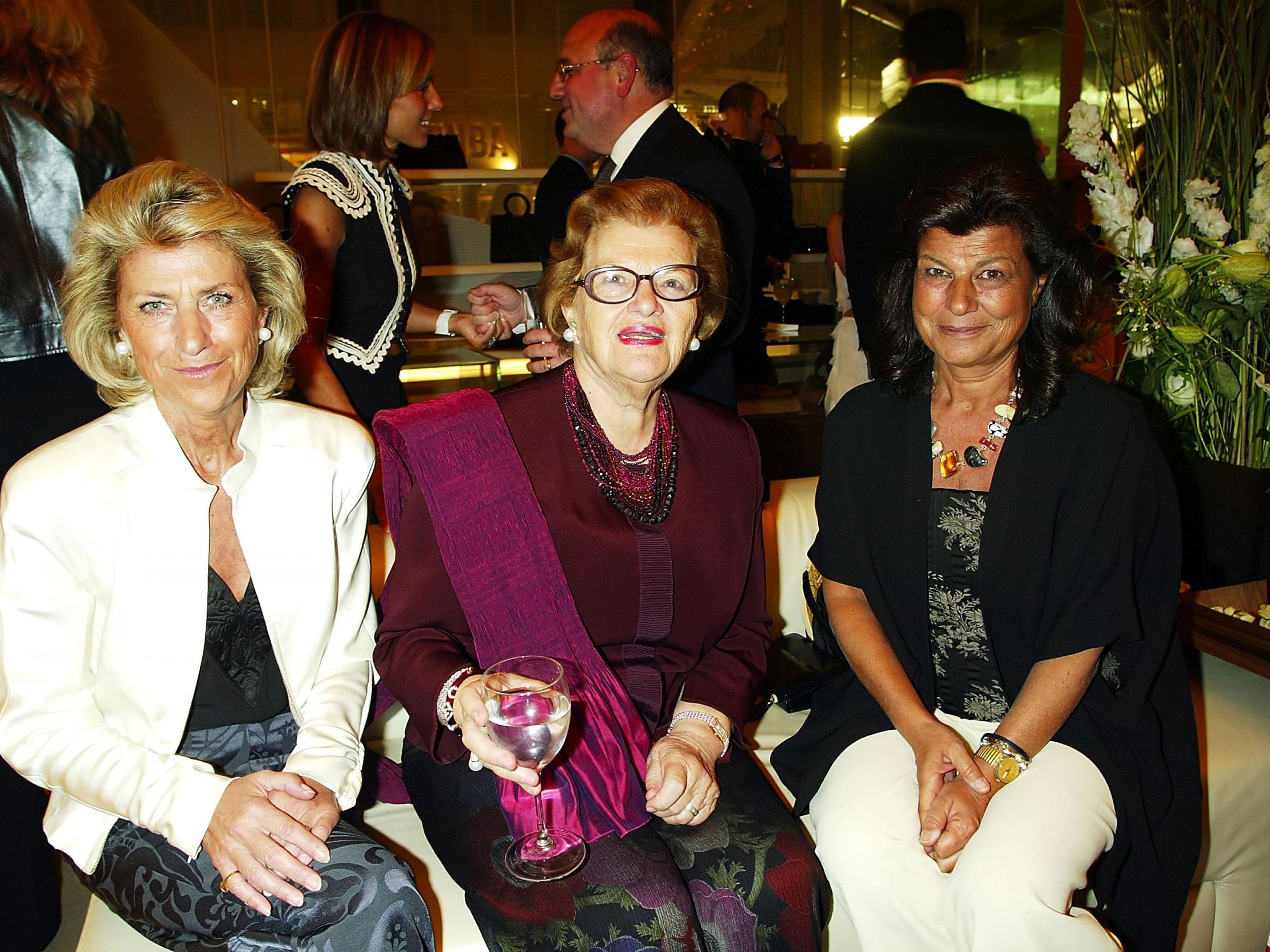The Independent's journalism is supported by our readers. When you purchase through links on our site, we may earn commission.
Wanda Ferragamo: matriarch behind the Salvatore Ferragamo fashion brand
She lost her husband, who was 20 years older than her, in 1960 but stepped into his business shoes with aplomb, putting her children to work

Wanda Ferragamo had no experience in either business or in designing shoes when her husband, Salvatore Ferragamo, who was more than 20 years her senior, died in 1960.
Yet, with the help of her six children, she turned it into an international fashion empire – her youngest child was two when she took the helm at the company her husband had founded.
“In those early days I felt an energy like a lion,” Ferragamo told People magazine in 1983. “Everyone was surprised, but I realised it was no use to be alone crying about my destiny. I wanted to keep alive all the efforts my husband made.”
Salvatore Ferragamo learned the cobbler’s trade as a boy in Italy, making his first pair of shoes for his sister when he was nine. He later moved to the US, working in Boston and later in Hollywood, where his elegant designs for women’s shoes became renowned during the early years of filmmaking.
After he returned to Italy in 1927, he remained one of the world’s premier shoemakers, with many innovative designs, including the wedge heel, which he made from cork. Before his death, the company had about 350 patents and 20,000 shoe patterns. Clients included Marilyn Monroe, Rita Hayworth, Audrey Hepburn and Greta Garbo.
“He studied anatomy and learned that the weight of the body falls vertically on the arch of the foot,” Wanda Ferragamo said in 2006. “That’s how he made great yet comfortable shoes.”
He also told his wife that his goal was to move beyond shoes and make the family business a full-fledged fashion house, with lines of clothing and accessories in addition to shoes. After his death, Wanda insisted that the company be known by his full name, Salvatore Ferragamo.
“I built on Salvatore’s very solid foundations,” she said. “When he died, I was quite familiar with the materials, the staff, the celebrities. I knew what Saks Fifth Avenue was.”
With her daughter Fiamma, then 19, as chief shoe designer, Ferragamo began to add to her husband’s legacy. One of the first things she did was to introduce handbags to match the shoes.
“I was never into that look,” Ferragamo said, “but the bags were a success.”
Other items soon followed, including scarves, men’s shoes, jewellery, spectacles and ready-to-wear clothes. Boutiques bearing the Ferragamo name opened in New York, Hong Kong, Seoul and other cities.
Under Ferragamo’s leadership, first as president and later as head of the board of directors, the firm grew from producing 6,500 pairs of shoes a year to more than 10,000 pairs a day. According to Bloomberg News, the business has annual revenue of about $1.6bn (£1.2bn).
In time, all of Ferragamo’s children – and later some of her grandchildren – would become executives at the company, each taking charge of a different side of the business, based in Florence.
One of the rules she established was that each child would receive the same salary. Another was that no in-laws were allowed to work for the company.
She was born Wanda Miletti in Bonito, Italy in the early Twenties. Her father was a doctor and the town’s mayor; her mother, a homemaker, died when her daughter was 16.
She met Salvatore Ferragamo, who was from the same town, when she was 18 and he was 42. Already wealthy, he was a benefactor of the local hospital. They were married in 1940.
Fiamma Ferragamo died in 1998, and another daughter, Fulvia Visconti Ferragamo, who was in charge of silk accessories, died in April. A son, Ferruccio Ferragamo, is now chairman of the firm, and a daughter, Giovanna Ferragamo is vice chairman. Two other sons, Massimo Ferragamo and Leonardo Ferragamo, manage US operations and investments, respectively. Other survivors include dozens of grandchildren and great-grandchildren.
Ferragamo recalled that when she met her husband, “He said to me, ‘Take off your shoes. I want to measure your feet so I can send you a pair’.”
Two weeks later, she received a pair of black suede oxfords, with perforations in the shape of scarabs.
“When I opened up the box, bellezza” she told People. “I had never worn anything so comfortable. I thought I could fly.”
Wanda Ferragamo, fashion house president, born 18 December 1921, died 19 October 2018
Subscribe to Independent Premium to bookmark this article
Want to bookmark your favourite articles and stories to read or reference later? Start your Independent Premium subscription today.

Join our commenting forum
Join thought-provoking conversations, follow other Independent readers and see their replies